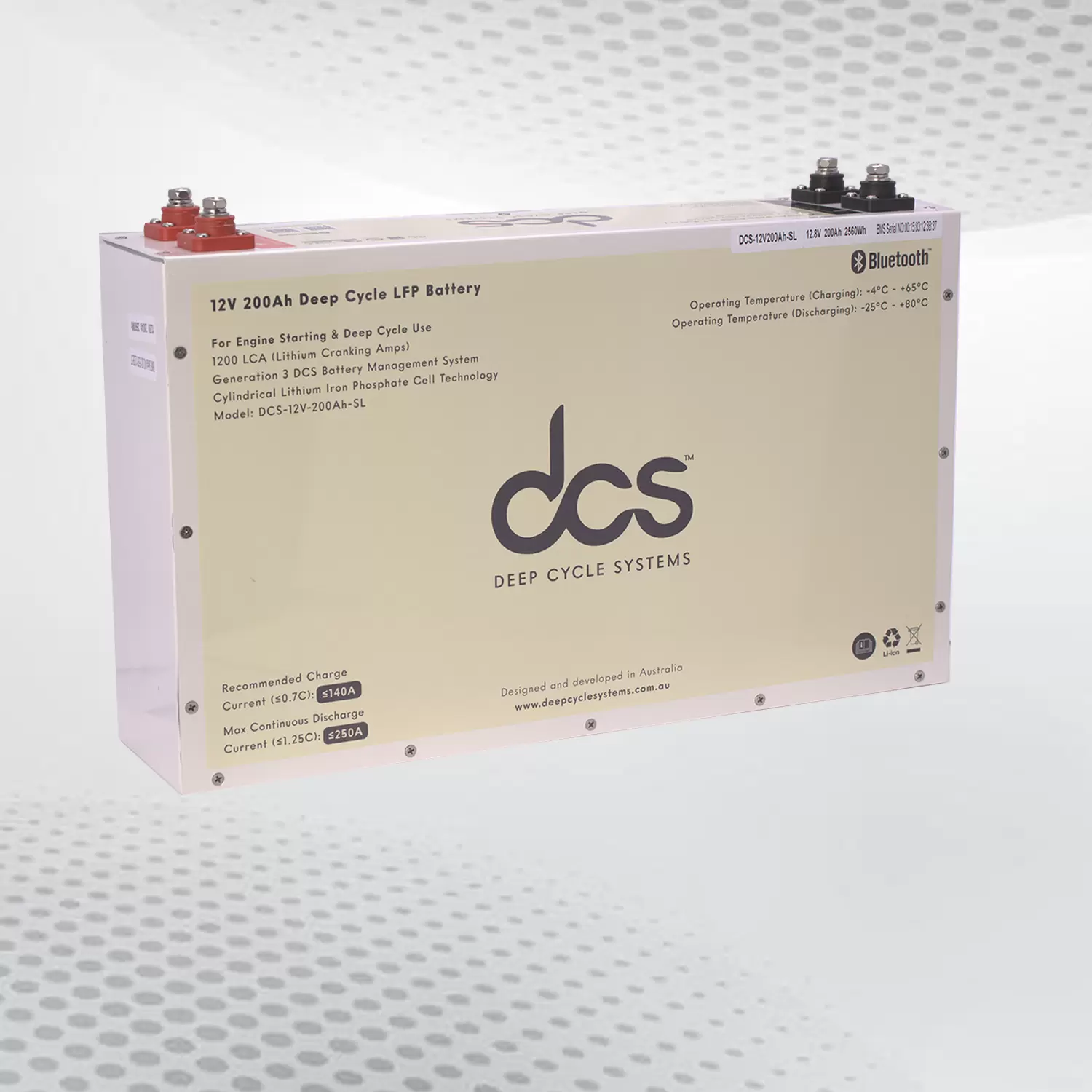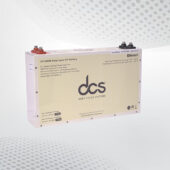Lithium 200Ah batteries are revolutionising the way they power your devices and systems. With their high energy density, long lifespan, and lightweight design, these batteries are becoming increasingly popular in various industries. This blog post will explore the advantages of lithium 200ah battery, applications, safety features, environmental impact, and future trends in battery technology.
Understanding The Lithium 200 ah Battery and Its Advantages
Lithium 200Ah batteries stand out in the energy storage market for their exceptional energy density and longevity compared to traditional battery technologies. Characterised by their lightweight nature, these batteries emphasise a pivotal shift towards more efficient and reliable energy solutions.
A definitive feature of lithium 200Ah batteries is their reduced self-discharge rate, which ensures a sustained and reliable power source over extended periods. Their ability to undergo rapid charging further enhances their utility, catering to a diverse range of applications demanding high endurance and quick energy replenishment.
Such attributes not only improve the operational efficiency of devices and systems powered by these batteries but also significantly reduce downtime, promoting a seamless energy usage experience.
Comparing Lithium-Ion Technology With Other Battery Types
Several differences become apparent when comparing lithium-ion technology with alternative battery types such as lead-acid and nickel-cadmium. Lithium-ion batteries, including the 200Ah variety, deliver superior energy density and an extended service life.
This performance improvement comes despite a relatively higher cost implication. In contrast, although more economically feasible, lead-acid batteries suffer from increased weight and reduced longevity. Nickel-cadmium alternatives provide a vital durability factor but fail to match the energy density capabilities exhibited by lithium-ion counterparts.
This comparative analysis highlights the advantageous position of lithium-ion, offering a combination of efficiency and sustainability, albeit at a premium, thereby aligning with contemporary energy storage demands and environmental sustainability goals.
Applications Of The Lithium 200 ah Battery in Various Industries
Lithium 200Ah batteries have found their place in many industries, each benefiting from their high energy capacity and efficiency.
Marine Applications
These batteries power electric boats and yachts in the marine sector, offering a cleaner alternative to diesel engines and ensuring silent, emission-free marine exploration.
Renewable Energy Storage
They are integral in storing energy from solar panels and wind turbines, enabling a consistent power supply even during non-peak sunlight or wind conditions, thus facilitating a more sustainable energy solution.
Recreational Vehicles (RVs)
Lithium 200Ah batteries supply reliable power to RVs and caravans for the leisure and travel industry. Their long-lasting charge supports off-grid living and travel.
Emergency Power Systems
These batteries are crucial backup power sources for hospitals, data centres, and emergency response units, ensuring critical systems remain operational during power outages.
Telecommunications
They provide dependable energy storage solutions for telecommunication infrastructures, ensuring uninterrupted service and connectivity even in remote areas without stable grid access.
Role Of The Lithium 200 ah battery In Renewable Energy Systems
Lithium 200Ah batteries are instrumental in enhancing efficiency and reliability in renewable energy systems. These batteries can store excess energy generated from renewable sources such as solar panels and wind turbines. By doing so, they facilitate a consistent power supply even when natural conditions are unfavourable for energy production.
This stored energy can be utilised during peak demand times, contributing to grid stability and reducing dependence on non-renewable energy sources. Integrating lithium 200Ah batteries into renewable energy systems underscores a commitment to sustainable energy practices, promoting a greener and more resilient energy infrastructure.
Safety Features And Protocols For 200 amp lithium ion battery
A 200 amp lithium ion battery incorporates several critical safety mechanisms to mitigate risks associated with its operation. These include overcharge protection mechanisms, which halt charging once the battery reaches capacity, thereby preventing damage or potential hazards.
Additionally, short-circuit protection is implemented to prevent circuits from closing improperly, which could lead to overheating or fires. Temperature control systems are also in place, actively monitoring and adjusting to ensure the battery operates within a safe temperature range.
Adhering to specific charging and discharging guidelines is imperative for these batteries’ longevity and safe use. It is advisable to consult the manufacturer’s recommendations to understand the optimal operational procedures, including the appropriate handling and storage practices, to ensure safety and efficiency in their use.
Optimising Performance And Longevity Of Lithium 200Ah Batteries
Certain maintenance practices must be diligently followed to ensure lithium 200Ah batteries achieve their optimal performance and maximum lifespan. It is crucial to avoid regularly allowing the batteries to undergo deep discharges, as this can significantly reduce their longevity.
Additionally, storing these batteries in an environment with a controlled temperature contributes to maintaining their efficacy and prolongs their usable life. Utilising a charger compatible with the specific requirements of lithium 200Ah batteries is imperative to prevent damage and sustain battery health.
Regular monitoring of the state of charge and voltage levels assists in detecting potential issues early, thereby averting detrimental effects on the battery’s performance. Adhering to these guidelines helps optimise the utility and durability of lithium 200Ah batteries, ensuring they deliver reliable energy storage and power solutions for extended periods.
Environmental Impact Of Li Ion Battery 200ah
The extraction of lithium, a key component of li ion battery 200ah, raises concerns regarding land degradation and water use. Mining processes can lead to soil contamination and depletion of water resources critical to ecosystems and local communities.
Manufacturing Footprint
The production of lithium 200Ah batteries involves significant energy consumption and greenhouse gas emissions. Efforts are underway to reduce the carbon footprint of manufacturing facilities through renewable energy sources and more efficient processes.
Chemical Pollution
If not correctly managed, lithium batteries can release harmful chemicals during production and at the end of their lifecycle. Proper recycling and disposal practices are essential to minimise environmental contamination.
Recycling Challenges
Recycling lithium 200Ah batteries is complex and energy-intensive. Innovations in recycling technologies aim to improve the recovery of valuable materials, reducing the demand for raw resources and the associated environmental impact.
Lifecycle Carbon Emissions
Despite the emissions associated with production and recycling, lithium 200Ah batteries offer a net positive environmental impact when replacing fossil fuel-based energy sources, significantly reducing lifecycle carbon emissions.
Biodiversity Impact
Mining operations for lithium and other minerals can threaten biodiversity. Habitat restoration and conservation planning are critical to mitigating these impacts and preserving ecological balance.
Future Trends In Lithium 200 ah Battery Technology
Anticipated lithium 200 ah battery technology advancements are set to redefine energy storage capabilities. Innovations focus on enhancing energy density and extending battery lifespans, with solid-state batteries emerging as a forefront development.
This technology promises increased safety and performance, potentially revolutionising how lithium batteries are used across various sectors. Additionally, fast-charging technologies are under development, aiming to significantly reduce charging times without compromising battery health.
Recycling processes are also evolving, with new methods expected to improve efficiency and sustainability in material recovery. Such progress underscores the commitment to making lithium-ion batteries more environmentally friendly and efficient, aligning with global efforts towards greener energy solutions.
Choosing The Right Lithium 200 ah Battery for Your Needs
Selecting an appropriate lithium 200 ah battery necessitates carefully assessing several critical factors, including energy density, lifespan, safety features, and compatibility with existing devices or systems.
Prospective buyers should prioritise acquiring batteries from reputable manufacturers to guarantee the authenticity and reliability of the product. Such a meticulous approach ensures that the chosen battery aligns with specific energy requirements, optimising performance and enhancing operational efficiency.
Installation Best Practices For Lithium 200 ah Battery Systems
Adhering to the manufacturer’s guidelines is paramount when installing lithium 200 ah battery systems to guarantee safety and efficacy in their operation. The process involves positioning the battery in an area that ensures adequate ventilation to dissipate heat generated during charging or discharging cycles.
As specified by the manufacturer, Using the correct cables and connectors is essential to maintain the system’s integrity and prevent potential electrical hazards. Moreover, securing proper earthing is critical to avoid electrical shocks and safeguard the system and its users.
By following these outlined protocols, one ensures that the lithium 200 ah battery systems are set up for optimal performance, aligning with safety standards and enhancing the overall efficiency of the energy storage solution.
Troubleshooting Common Issues With Lithium 200Ah Batteries
Addressing common issues with lithium 200Ah batteries involves vigilant monitoring and proactive maintenance. Overcharging presents a notable concern; hence, employing a charger designed for lithium technology is crucial to prevent exceeding the battery’s voltage threshold.
Similarly, undercharging can diminish the battery’s efficacy, so regular checks of the state of charge are essential to ensure optimal performance. Temperature fluctuations pose another challenge: extreme cold or heat can adversely affect the battery’s function and longevity.
Implementing a temperature-controlled environment for storage and use significantly mitigates this risk. Early detection of these issues through routine inspection and adherence to charging protocols plays a pivotal role in maintaining the battery’s health and functionality, thus preventing premature deterioration or failure.
Return On Investment Of Lithium 200Ah Batteries
Investing in lithium 200Ah batteries brings significant returns over time, driven by their superior performance and durability.
Initial Cost vs. Long-Term Savings
Although the upfront cost of lithium 200Ah batteries is higher than traditional battery types, the long-term savings achieved through reduced replacement needs and lower maintenance costs justify the initial investment.
Energy Efficiency
The high energy density of lithium 200Ah batteries translates to more excellent energy storage and usage efficiency, leading to energy cost savings, especially in off-grid or renewable energy applications.
Lifespan
With a lifespan exceeding ten years, the extended service life of lithium 200Ah batteries far surpasses that of conventional batteries, ensuring a better return on investment through decreased replacement frequency.
Maintenance Costs
The minimal maintenance requirements of lithium 200Ah batteries reduce ongoing costs, contributing to overall savings.
Operational Efficiency
The rapid charging and low self-discharge rates of lithium 200Ah batteries enhance operational efficiency, reducing downtime and increasing productivity in various applications.
FAQs
Are Lithium 200Ah Batteries Considered Safe For Operation?
Indeed, lithium 200Ah batteries are engineered with integrated safety mechanisms to guard against overcharging, short circuits, and excessive heat, ensuring their reliability across numerous applications.
What Is The Expected Lifespan Of A Lithium 200 ah battery?
Typically, a lithium 200 ah battery can serve effectively for over a decade, subject to the manner of usage and adherence to recommended maintenance routines.
Is It Feasible To Employ A Li-ion Battery 200ah Within Recreational Vehicles Or Campers?
Absolutely, the compact design, superior energy capacity, and durability of Li-ion batteries 200ah make them an optimal selection for recreational vehicles and campers.
How Should One Proceed With The Disposal Of A Lithium 200 ah battery?
Disposal requires recycling at authorised centres to prevent environmental harm and facilitate the correct handling of hazardous components.
Can Multiple Lithium 200Ah Batteries Be Linked In Parallel?
It is possible to connect several lithium 200Ah batteries in parallel, enhancing the total energy capacity and power supply for various devices or systems.
Conclusion
In summary, lithium 200Ah batteries represent a formidable and adaptable choice for energy storage, catering to a broad spectrum of sectors. Their superior energy density, extended service duration, and positive environmental attributes make them an ideal option for those seeking efficient and sustainable energy solutions. This exploration into the benefits, applications, safety measures, and forthcoming advancements in lithium battery 200ah technology equips individuals with the knowledge to fulfil their energy demands effectively.
| Related Business Listings |
| Contact Directory |
| Local Business Profiles |



